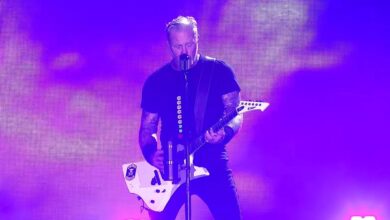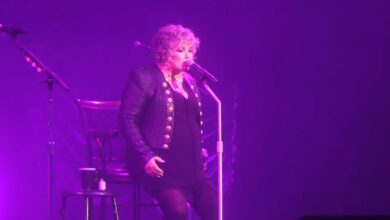Evanescence and Paul McCoy Revive “Bring Me to Life” in a Powerful Louder Than Life 2025 Performance
When the unmistakable piano intro of Bring Me to Life drifted over the speakers, the Louisville crowd froze in anticipation. A heartbeat later, the guitars detonated, unleashing a surge of energy that rippled across the festival grounds. For everyone there, it felt like witnessing something extraordinary and rare.
Amy Lee’s voice cut through with crystalline power, at once commanding and vulnerable, crafted for a night like this. The chemistry between her soaring delivery and Paul McCoy’s return was electric—equal parts nostalgia, surprise, and raw force colliding in the same moment.
The band roared with renewed strength, channeling nu-metal ferocity while layering in modern grit. The riffs were heavier, the drums sharper, and the electronic touches added edge without losing the essence of the original. It sounded both timeless and current.
When McCoy stepped up, the atmosphere shifted. His lines weren’t just a throwback—they were a declaration. His gravelly urgency alongside Lee’s soaring purity reminded fans why their pairing had once stormed the charts and etched itself into rock history.
The audience erupted as though they’d been holding their breath for years. Cheers became screams, voices joined as one, and hands filled the air. Phones lit up the night sky as the chorus echoed back at the stage like a wall of sound.
The production amplified the drama. Lights synced perfectly with the music’s rises and falls—deep blues and purples for the verses, searing reds for the bridge, and piercing strobes when the chorus thundered through. It was theatrical, cinematic, yet rawly alive.
There was tension, too—the weight of time, of wondering if the magic could still hold after so many years. As the band navigated every passage, from whispers to shouts, it became clear: the fire wasn’t gone. If anything, it burned more fiercely than ever.
Amy Lee commanded every inch of the stage, her presence magnetic. Every glance, gesture, and note carried weight, bridging the distance between performer and audience. Bring Me to Life became more than a performance—it was confession, catharsis, and communion.
McCoy played his part with precision. His “wake me up” lines were delivered with grit and reverence, neither overshadowing nor fading into nostalgia. Instead, he balanced Lee’s soaring intensity, reminding the world why this duet first captured hearts two decades ago.
The musicianship behind them was razor-sharp. Guitars tore through the mix, drums hammered with precision, and the keys filled in the atmosphere, creating a vast sonic landscape. The rhythm section anchored everything, giving the singers freedom without ever losing momentum.
Emotionally, it felt like reconciliation. For longtime fans, it was a homecoming. For new listeners, it was an initiation. Past and present collapsed into a single roar as thousands belted out the chorus together under the Kentucky sky.
Any imperfections only heightened the authenticity—a breath caught here, a note pushed to the edge there. Far from flaws, they became reminders that this was live, raw, and deeply human. The risks made the rewards more powerful.
As the final notes faded, the sound lingered long past the instruments. The audience clung to the silence, reluctant to let go of the moment. The applause that followed was less a cheer than a collective release of awe and gratitude.
When the band walked off stage, one thing was certain: this wasn’t just a revival. It was a reawakening. Louder Than Life 2025 didn’t just bring back Bring Me to Life—it reignited it, proving the song still burns as fiercely today as it did at its birth.
By the end, Evanescence hadn’t just played a hit—they reminded the world of their enduring place in rock’s story. Bring Me to Life at Louder Than Life 2025 wasn’t nostalgia. It was renewal, a flame lit again, and proof that some anthems never fade.





